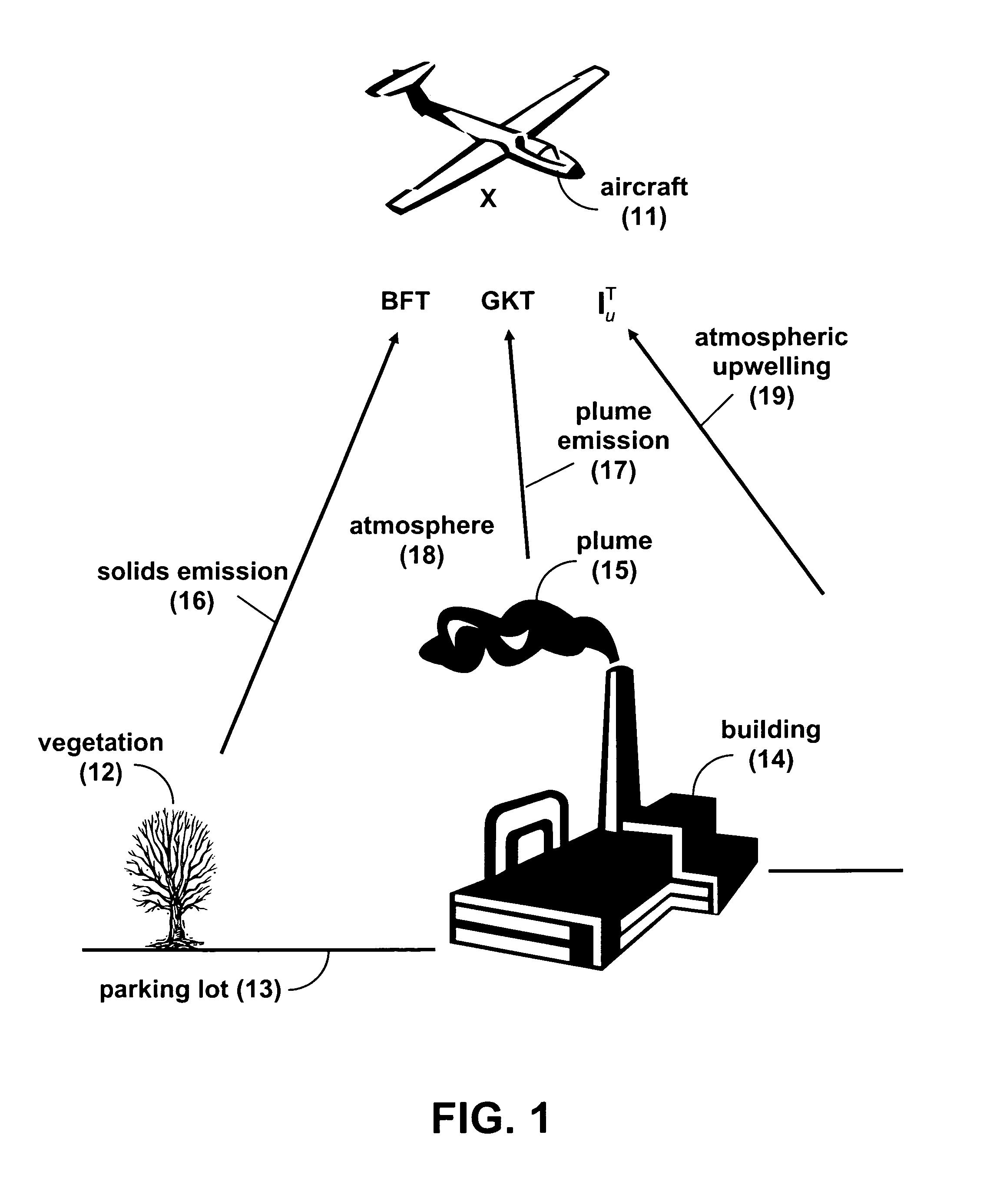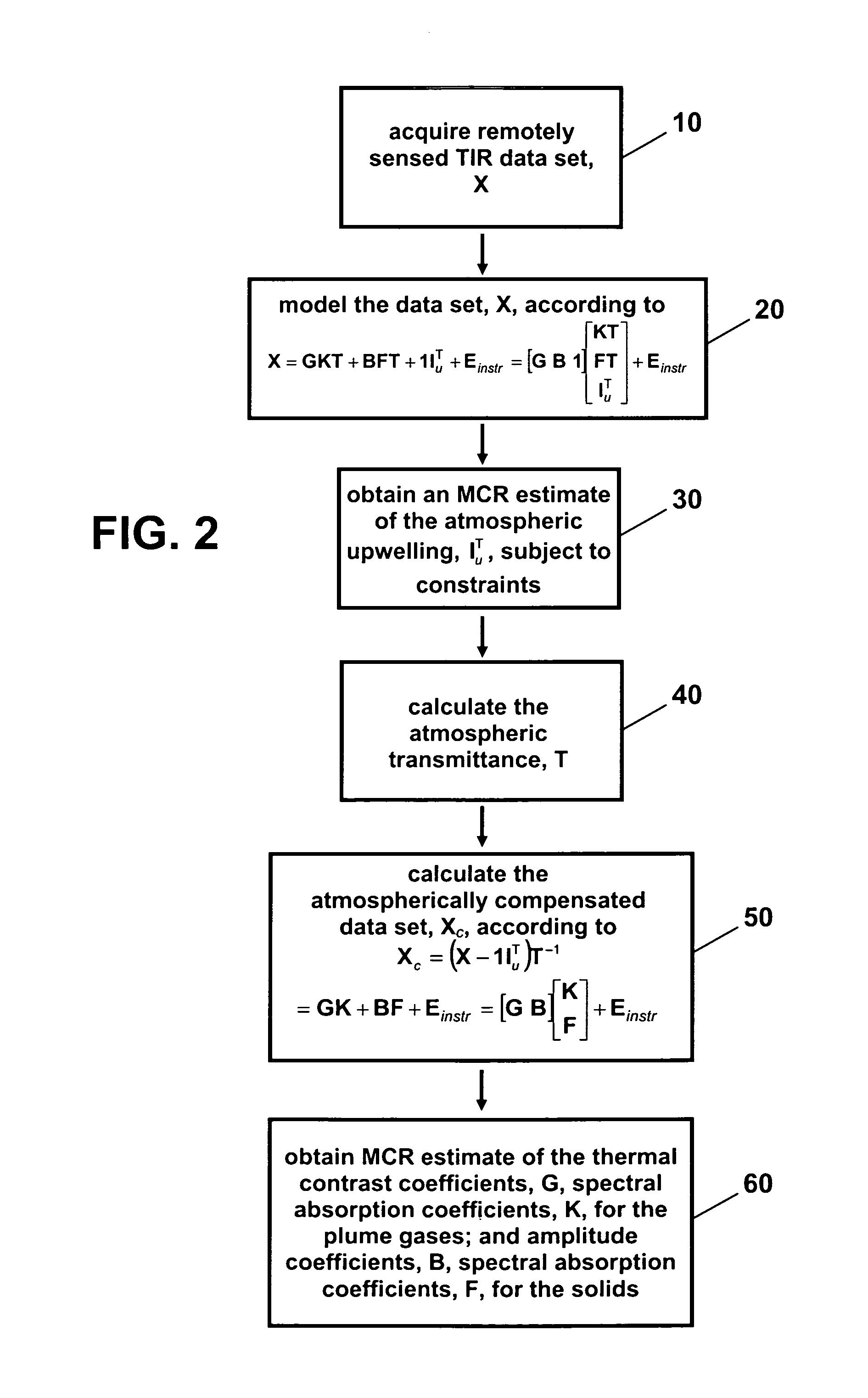Method to analyze remotely sensed spectral data
a spectral data and remote sensing technology, applied in the field of remote sensing spectral data processing, can solve the problems of difficult extraction of all the useful information from these systems, limited spectral libraries, and laboratory spectra not representative of remotely acquired spectra
- Summary
- Abstract
- Description
- Claims
- Application Information
AI Technical Summary
Problems solved by technology
Method used
Image
Examples
Embodiment Construction
[0023]MCR differs from traditional spectral unmixing algorithms in that it performs endmember determination and abundance estimation iteratively. Starting with an initial guess for either the endmembers or abundances, MCR alternately estimates the endmembers and abundances. Because of the iterative nature of MCR, a complete knowledge of the endmembers and abundances is not required. MCR is very flexible in that it can incorporate varying amounts of information regarding the data set, ranging from the use of random numbers as initial guesses for the endmembers and abundances, to knowledge of the endmembers and abundances of one or more components. MCR iteratively refines the initial guesses for the endmembers and abundances such that they minimize a least squares criterion and satisfy any imposed constraints such as non-negativity or equality of the proposed solutions. See R. Tauler et al., “Multivariate Curve Resolution Applied to Spectral Data from Multiple Runs of an Industrial Pr...
PUM
 Login to View More
Login to View More Abstract
Description
Claims
Application Information
 Login to View More
Login to View More - R&D
- Intellectual Property
- Life Sciences
- Materials
- Tech Scout
- Unparalleled Data Quality
- Higher Quality Content
- 60% Fewer Hallucinations
Browse by: Latest US Patents, China's latest patents, Technical Efficacy Thesaurus, Application Domain, Technology Topic, Popular Technical Reports.
© 2025 PatSnap. All rights reserved.Legal|Privacy policy|Modern Slavery Act Transparency Statement|Sitemap|About US| Contact US: help@patsnap.com



